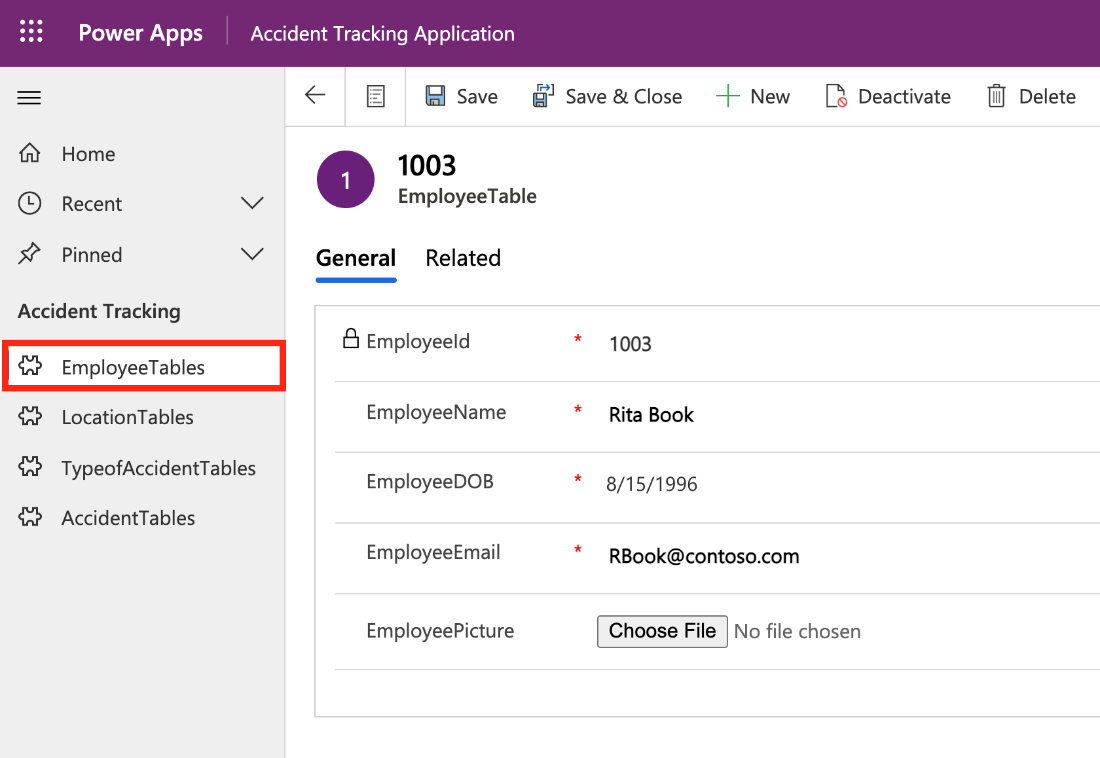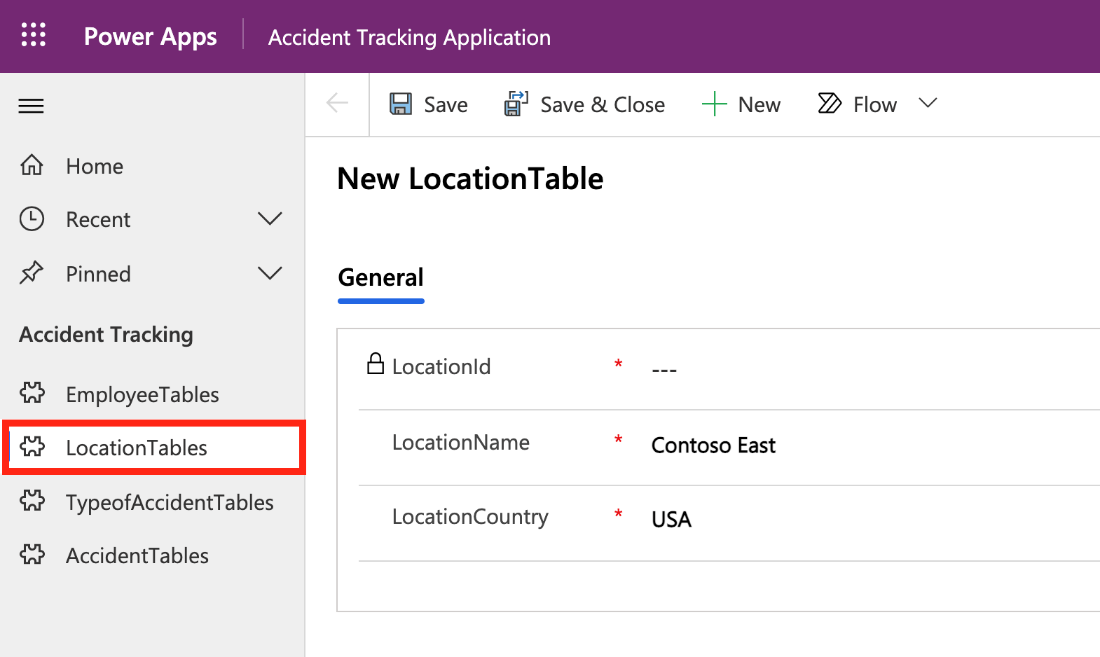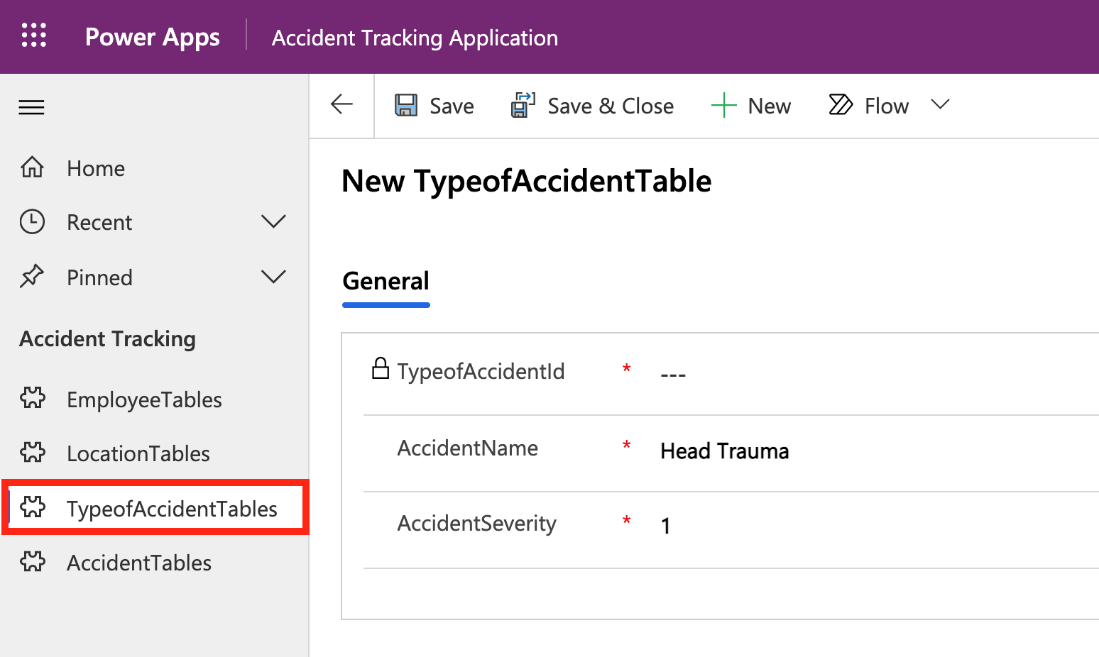Complete model-driven app solution
This section reviews the screens that are necessary for building out the solution. The idea is that you'll have a visualization of the complete solution. As with any great artist, you need to visualize the final result to begin putting it together.
The solution can be divided into the following components:
Employee form - Use this form to add employees (metadata) to the solution. You'll need a place to track basic information about employees. Therefore, in this scenario, you'll create a table to store basic employee information along with a form to enter and modify employee data.
Location form - Use this form to track basic information about the different Contoso locations. The same concept applies, where you'll build a table, plus a form, for managers to interact with the data.
Type of Accidents form - Use this form to track the different types of accidents that occur. Also, you can use this form to track some information (metadata) about the accidents, such as a severity scale.
Incident tracking form - Use this form as the main place where managers can record information about employee accidents. This form uses data from all previous forms.
When building a model-driven app, you need to divide the solutions into smaller components in which tables in Microsoft Dataverse are the building blocks. Then, model-driven apps will start from your data model and build up from the shape of your business process. This section separated the process into the different tables and forms, which are needed for your accident tracking application. In the next unit, you'll analyze your data model.


